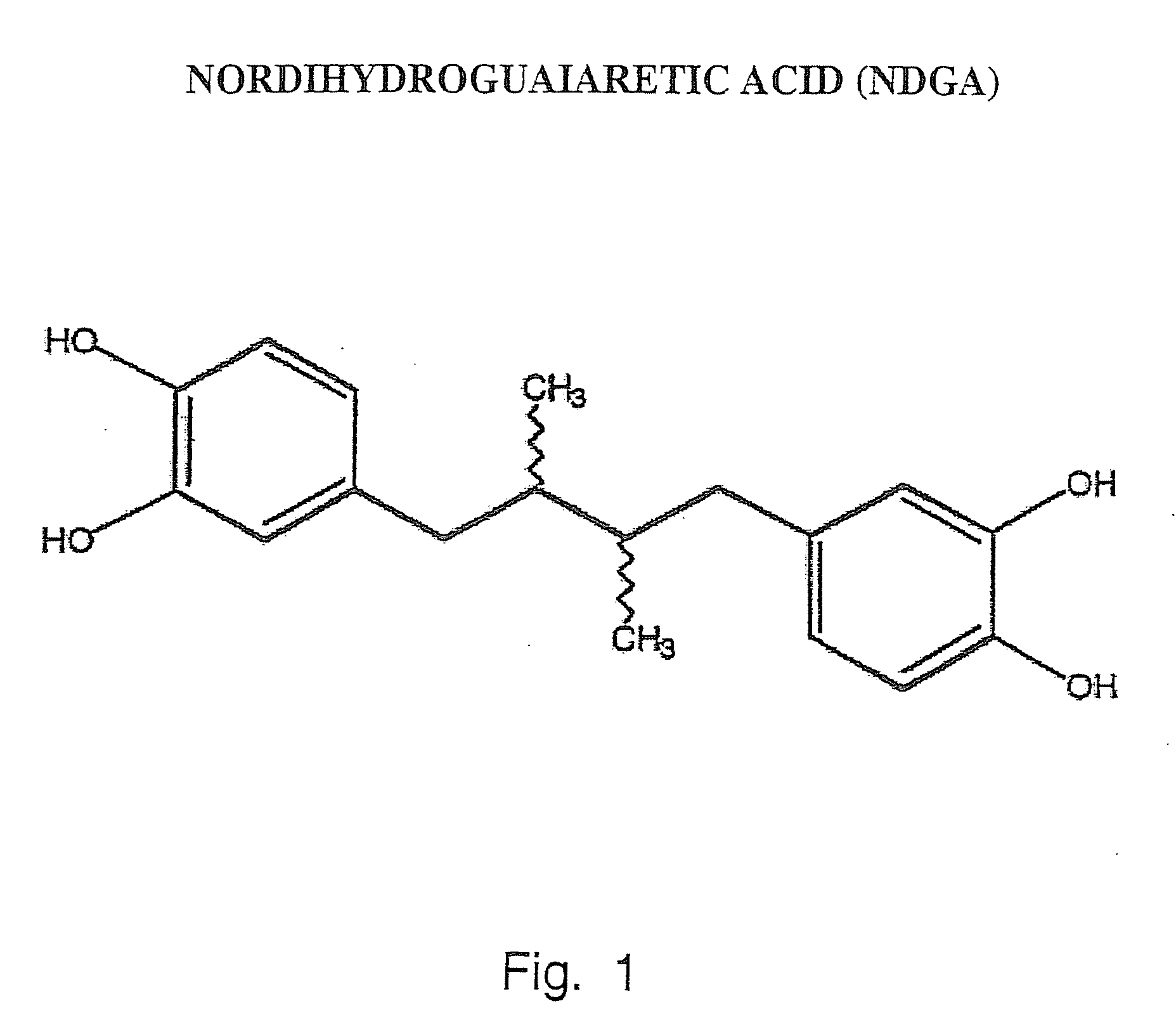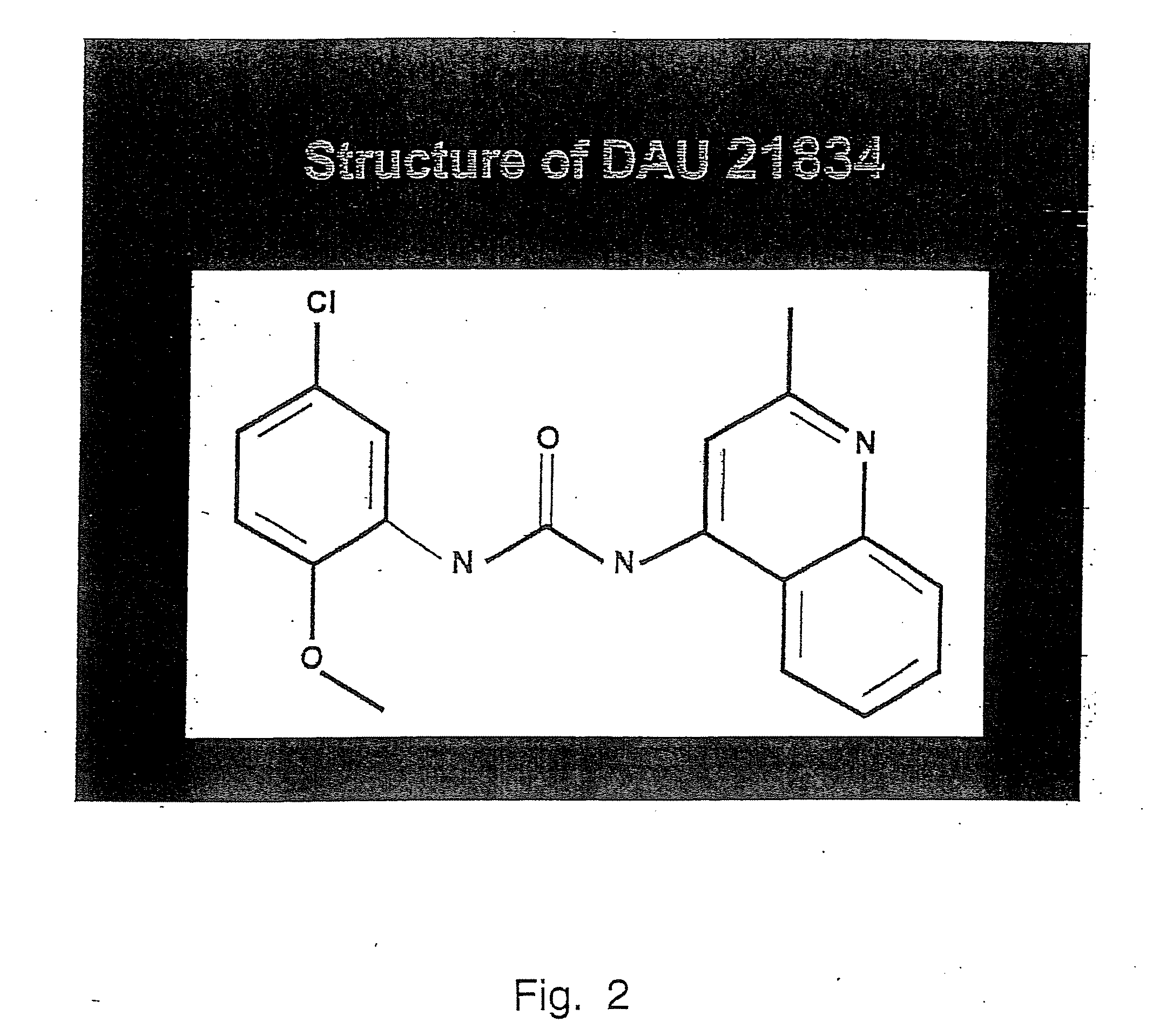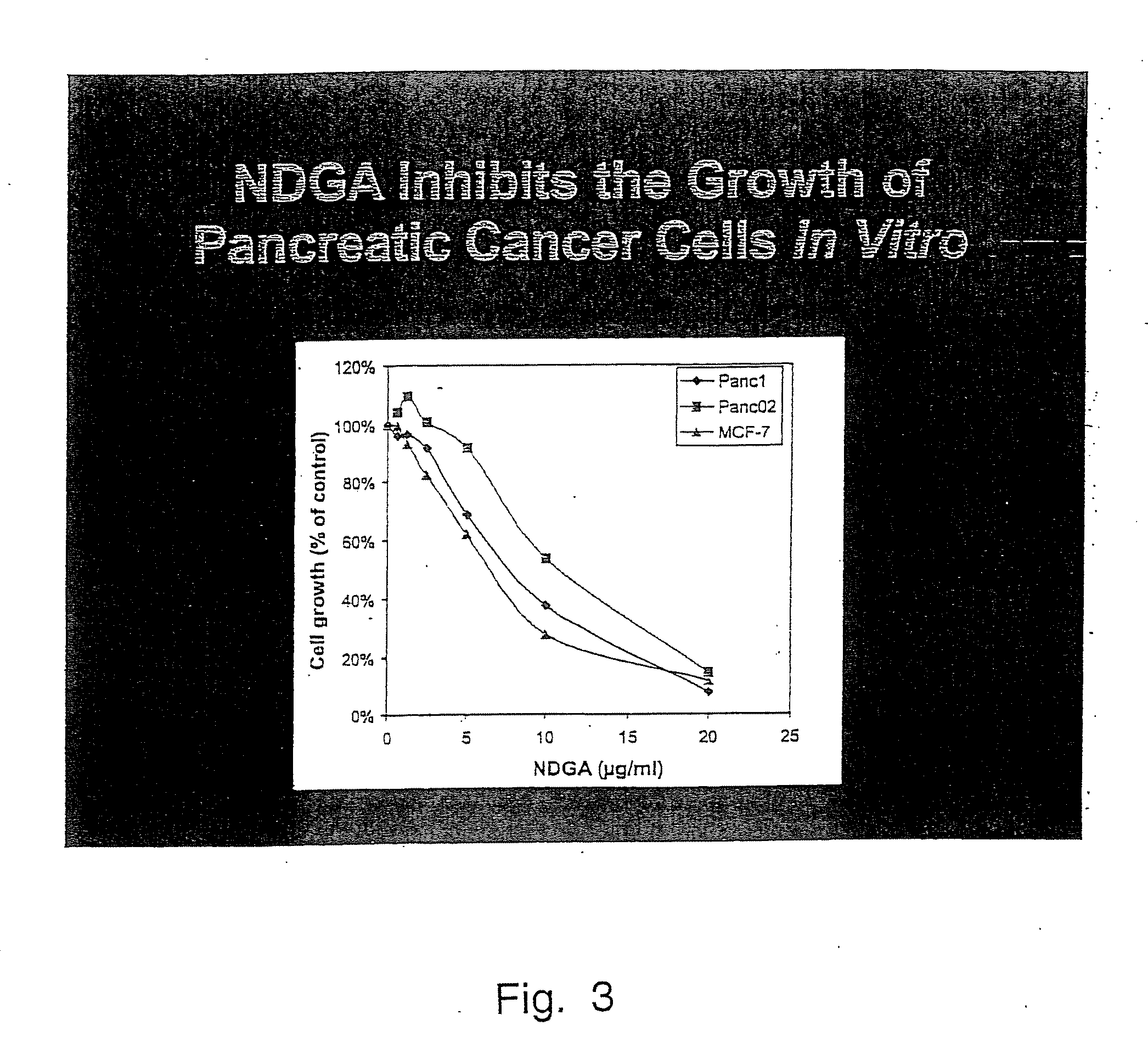Tyrosine kinase receptor antagonists and methods of treatment for pancreatic and breast cancer
- Summary
- Abstract
- Description
- Claims
- Application Information
AI Technical Summary
Benefits of technology
Problems solved by technology
Method used
Image
Examples
example 1
Materials and Methods
Materials.
[0089] NDGA and IGF-1 were gifts from Insmed Inc. (Glen Allen, V A). IGF-1R kinase domain peptide was obtained from Upstate, USA (Charlottesville, Va.). Antibodies against the IGF-1R (C-20), HER2 / neu (C-18), and phosphospecific antibodies recognizing phosphotyrosine (PY20), phosphoBAD (ser136), and pNeu (Tyr1248), and HRP-conjugated anti-phosphotyrosine antibody (PY20HRP) were obtained from Santa Cruz Biotechnology (Santa Cruz, Calif.). αIR3, a monoclonal antibody against the IGF-1R, was obtained from CalBiochem (San Diego, Calif.), and the phosphospecific antibody pAkt(ser473) was obtained from Cell Signaling (Beverly, Mass.). All other reagents were from Sigma (St. Louis. Mo.), except as indicated below.
IGF-1R Peptide Autophosphorylation.
[0090] 1 μg of IGF-1R kinase domain peptide was incubated ± varying concentrations of NDGA in 2% DMSO in 40 mM Tris, pH 7.4, 80 μM EGTA, 0.25% 2-mercaptoethanol, 80 μM Na3VO4, 10 mM MgCl2, and 2 ...
example 2
Materials and Methods
[0120] Cell culture aid reagents. Human SH-SY5Y, SHEP, and Kelly neuroblastoma cells were cultured in Dulbecco's modified Eagle medium (DMEM) with 10% calf serum and maintained in a humidified incubator with 10% CO2 at 37° C. NDGA from Insmed Corporation (Richmond, Va.) was dissolved immediately before each experiment in DMSO to make a 1000× solution, which was then added to the cell culture medium. IGF-I was purchased from GroPep (Adelaide, SA, Australia). Anti-IGF-IR antibody (αIR-3) was purchased from Calbiochem (San Diego, Calif.). Anti-phosphotyrosine antibody was purchased from Santa Cruz Biotechnology (Santa Cruz, Calif.). Anti-Akt, anti-phospho-Akt, anti-Erk1 / 2, anti-phospho-Erk1 / 2, and anti-cleaved caspase-3 antibodies were purchased from Cell Signaling Technologies (Beverly, Mass.). Horseradish peroxidase conjugated goat anti-rabbit IgG was purchased from Zymed Laboraties (South San Francisco, Calif.). CyQuant was purchased from Molecula...
example 3
Materials and Methods
Materials
[0153] NDGA and IGF-I were a gift from Insmed Inc. (Glen Allen, Va.). Antibodies against the IGF-IR (C-20), HER2 (C-18), and phosphospecific antibodies recognizing phosphotyrosine (PY20), and pNeu (Tyr1248), and HRP-conjugated anti-phosphotyrosine antibody (PY20HRP) were all obtained from Santa Cruz Biotechnology (Santa Cruz, Calif.). Alpha IR3, a monoclonal antibody against the IGF-1R, was obtained from CalBiochem (San Diego, Calif.). Phosphospecific antibodies pIGF-IR (Y1131) and pAkt(ser473) were obtained from Cell Signaling (Beverly, Mass.). All other reagents were from Sigma (St. Louis, Mo.), except as indicated below. Gefitinib (Iressa) was a gift of Mark Moasser, University of California San Francisco. Herceptin was purchased from a commercial pharmacy.
[0154] MCF-7 cells stably transfected with the full length HER2 cDNA (MCF-7 / HER2-18) or control vector (MCF-7 / neo) were generously provided by Dr. Christopher Benz (Buck Institute f...
PUM
| Property | Measurement | Unit |
|---|---|---|
| Molar density | aaaaa | aaaaa |
| Molar density | aaaaa | aaaaa |
| Molar density | aaaaa | aaaaa |
Abstract
Description
Claims
Application Information
 Login to View More
Login to View More - R&D
- Intellectual Property
- Life Sciences
- Materials
- Tech Scout
- Unparalleled Data Quality
- Higher Quality Content
- 60% Fewer Hallucinations
Browse by: Latest US Patents, China's latest patents, Technical Efficacy Thesaurus, Application Domain, Technology Topic, Popular Technical Reports.
© 2025 PatSnap. All rights reserved.Legal|Privacy policy|Modern Slavery Act Transparency Statement|Sitemap|About US| Contact US: help@patsnap.com



